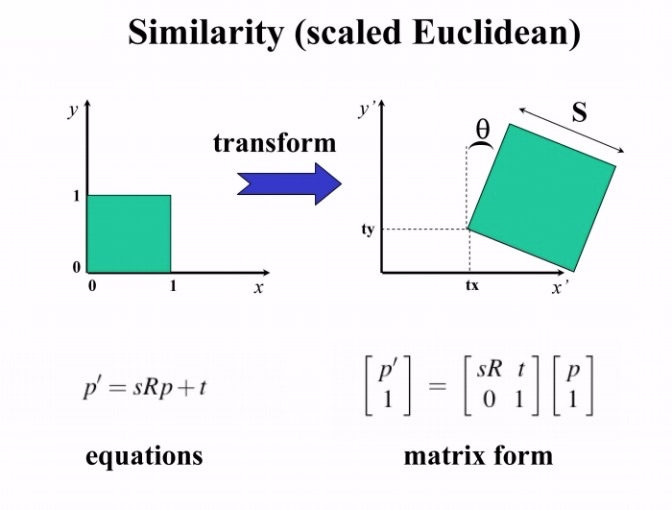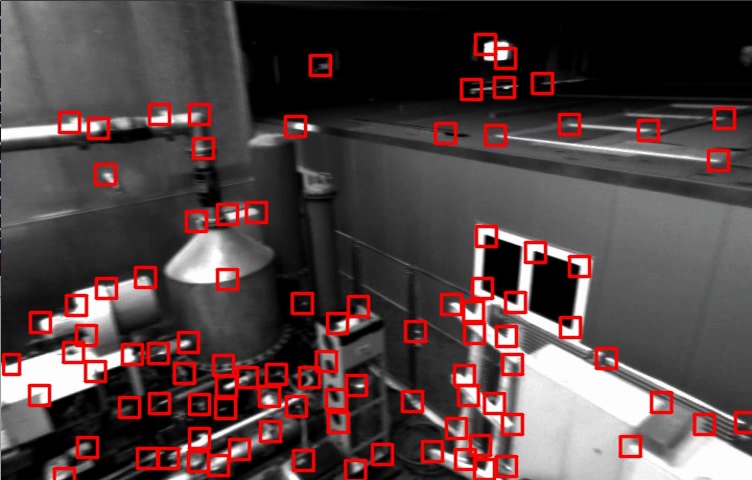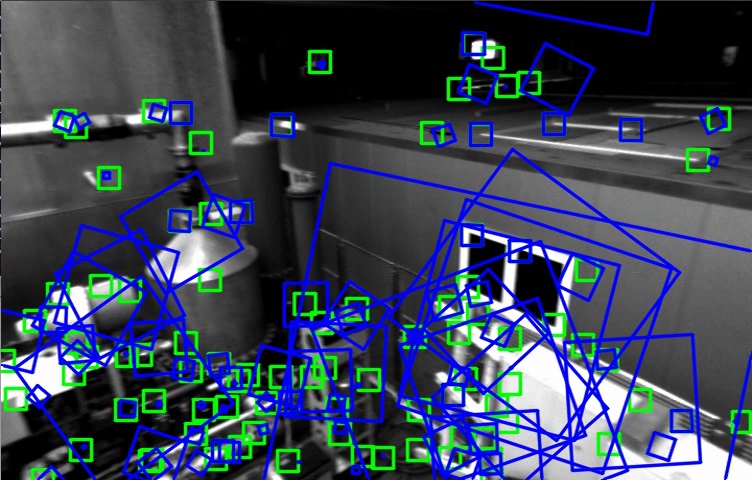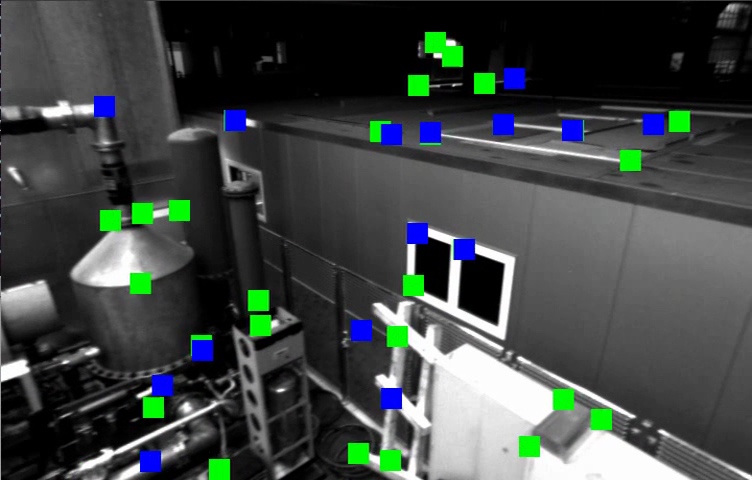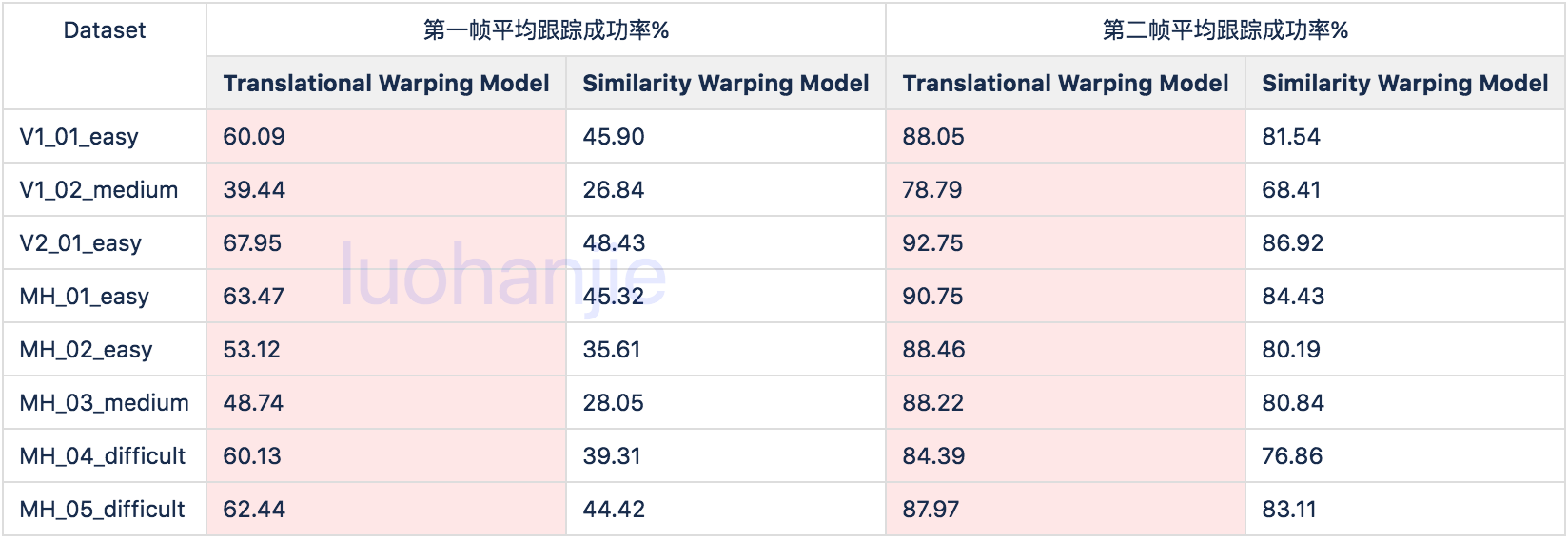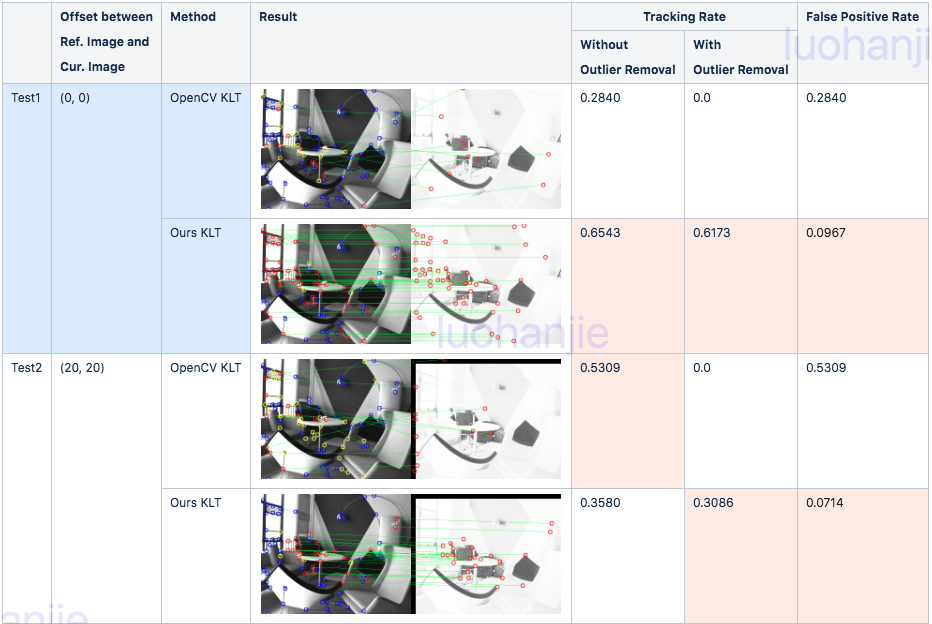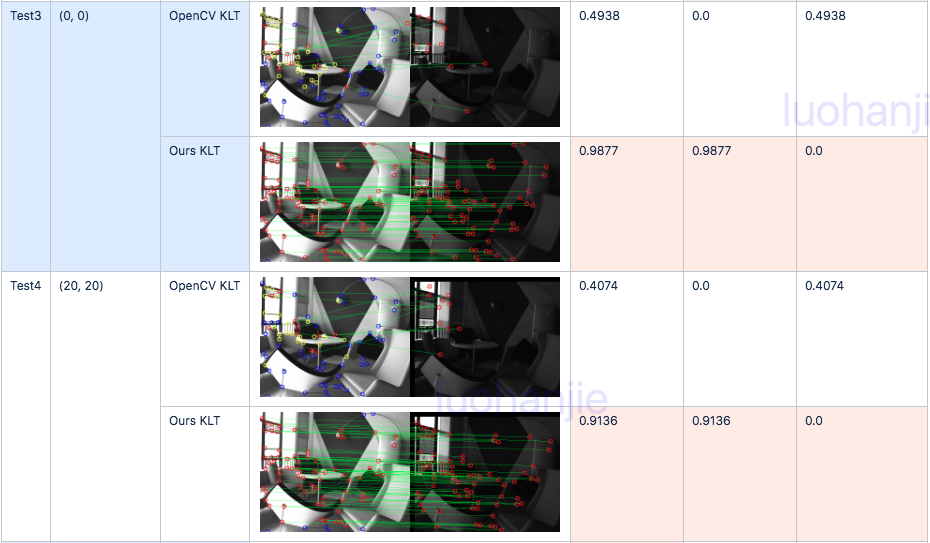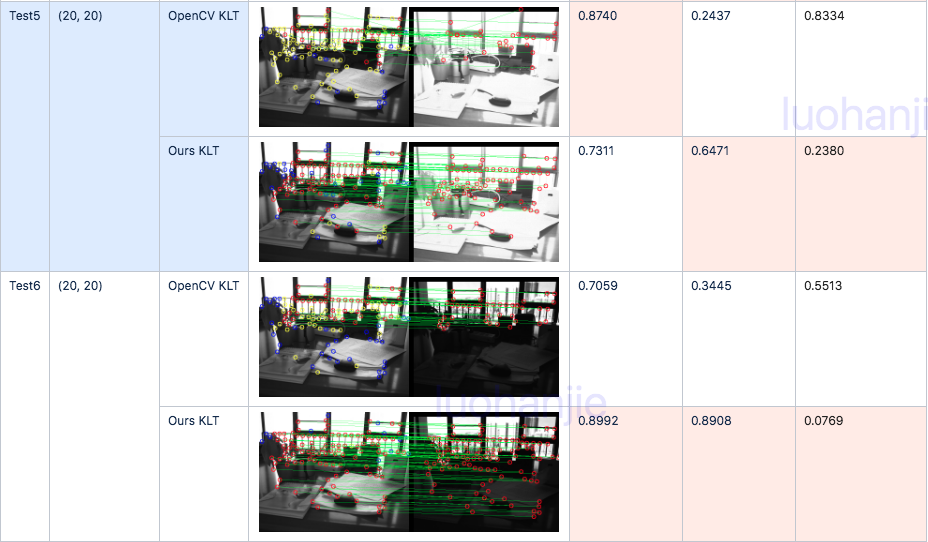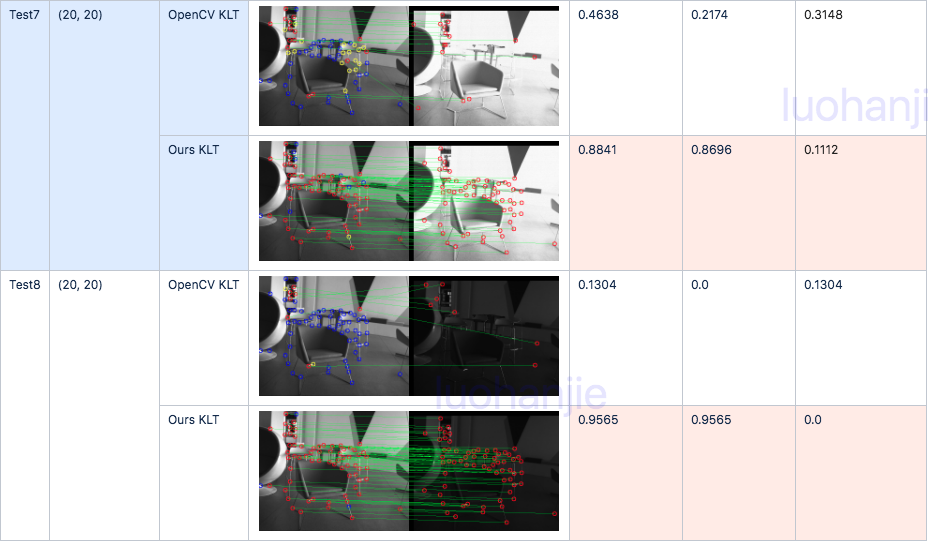Radiometric Calibration
Method Comparison
We compare the estimates resulting of TUM Mono VO dataset1 from algorithms proposed in 2 , 3 and in 4 .
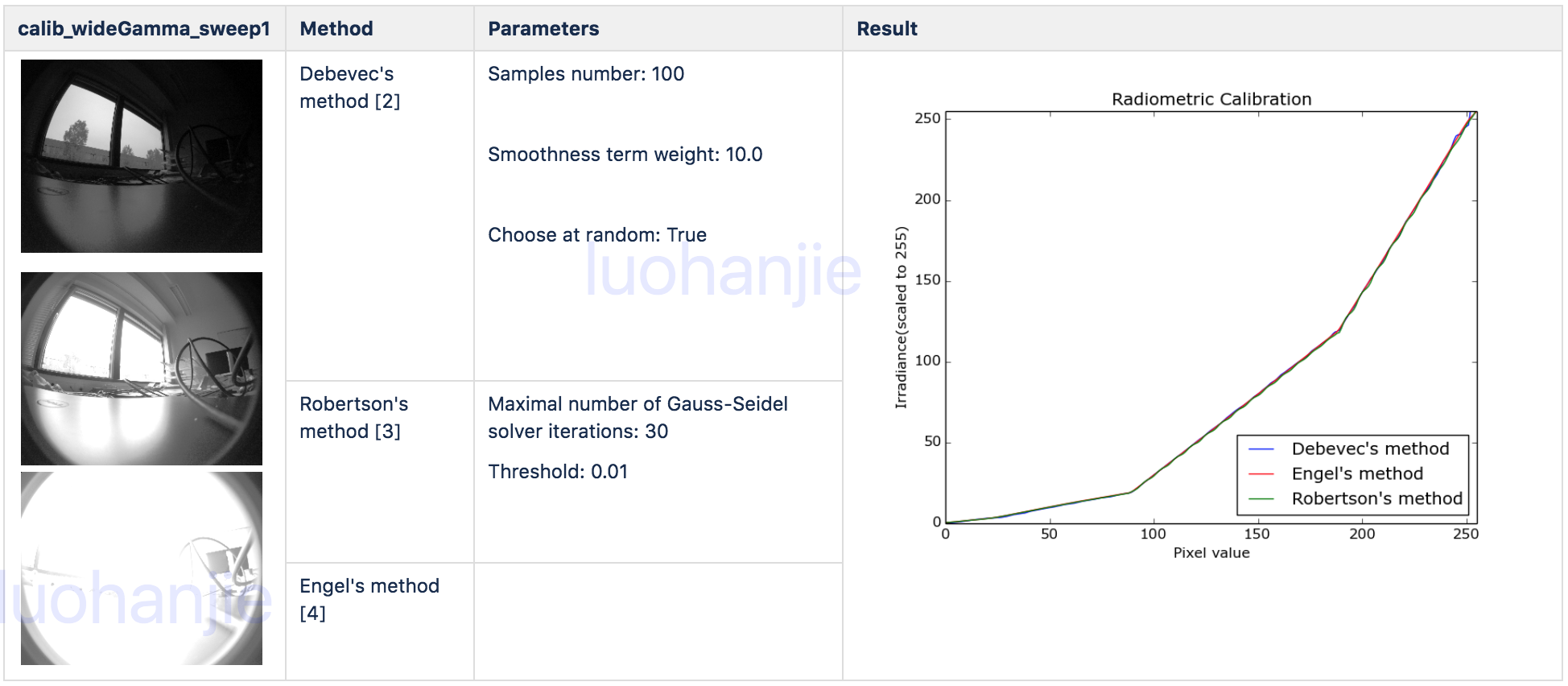
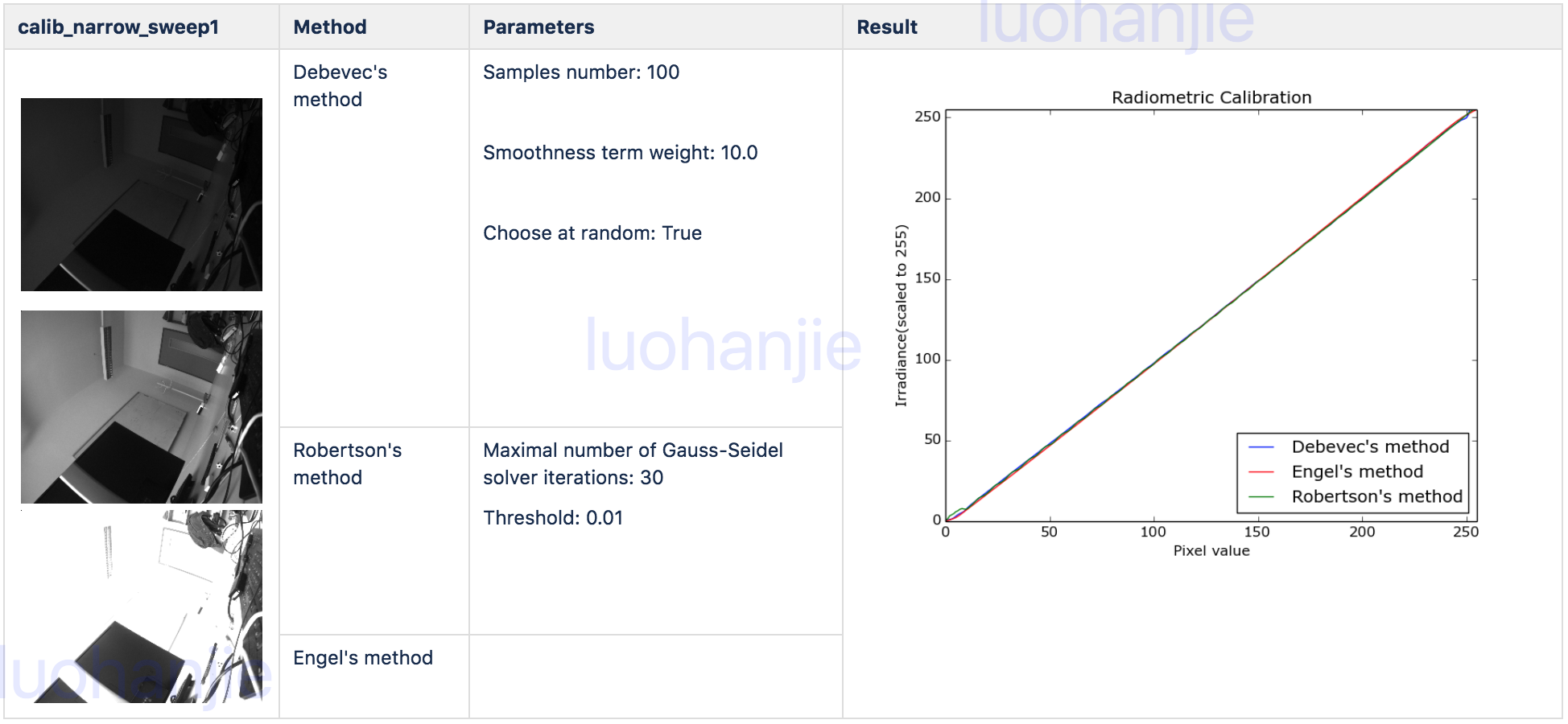
As can be seen above, there is no significant difference between methods. Engel's method performs better for the marginal values as overexposed pixels are removed from the estimation. In this case, Engel's method is selected for radiometric calibration.
Radiometric Calibration for Point Grey Camera
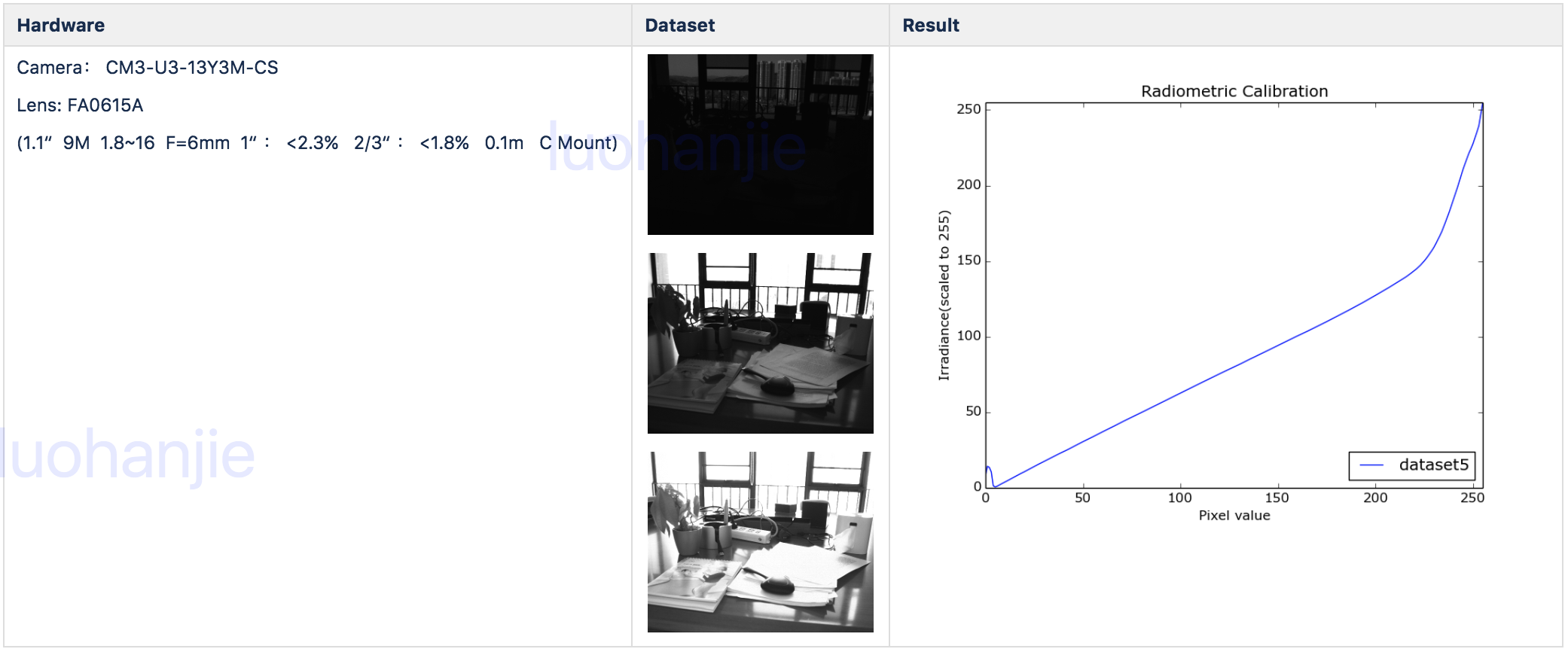
Experimental Verification
Evaluation in static environment
Radiometric image is obtained by recovering exposure time and inverse radiometric response function for raw image. Two images are captured taken under different exposures while the camera and the scene is fixed. The radiometric images are computed accordingly after that.
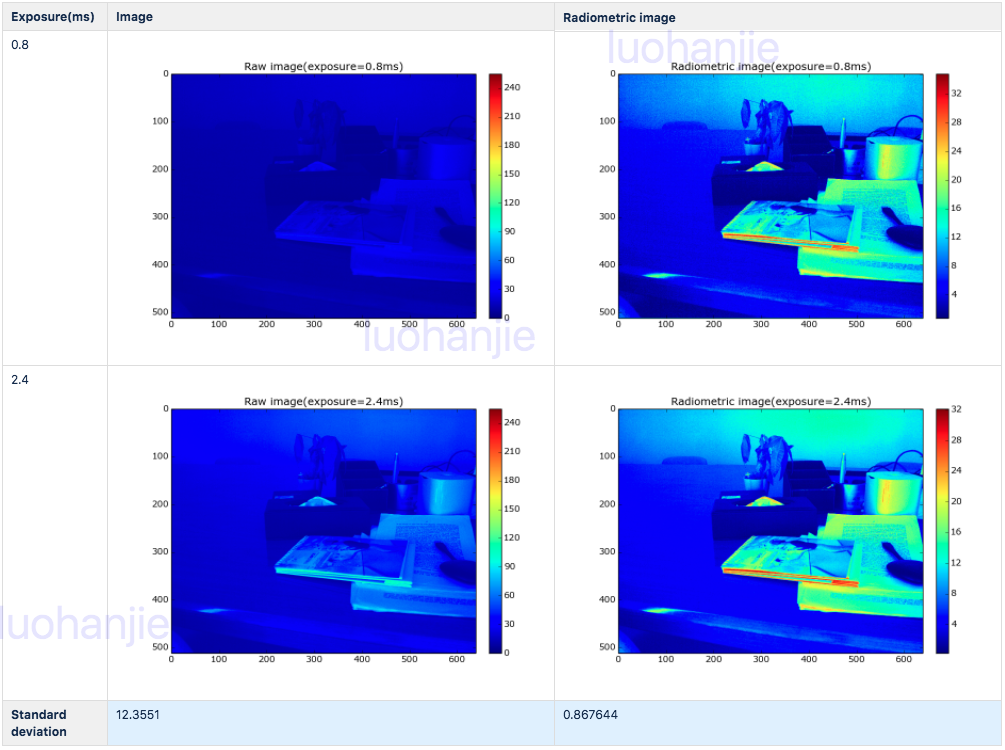
Experiment shows that the recovering image irradiance stay stable regardless of exposure change.
Evaluation in dynamic environment
Evaluation of KLT Feature Tracking in Radiometric image
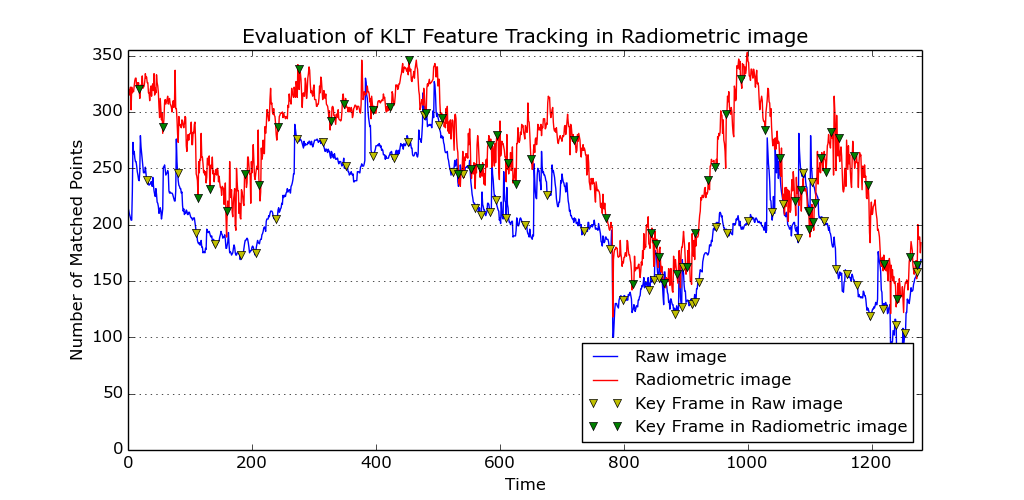
The experiment above compares the number of matching feature points in the radiometric image and in the raw image on indoor scene.
https://vision.in.tum.de/data/datasets/mono-dataset↩︎
Debevec, P.E. and Malik, J., 2008, August. Recovering high dynamic range radiance maps from photographs. In ACM SIGGRAPH 2008 classes (p. 31). ACM.↩︎
Robertson, M.A., Borman, S. and Stevenson, R.L., 1999. Dynamic range improvement through multiple exposures. In Image Processing, 1999. ICIP 99. Proceedings. 1999 International Conference on (Vol. 3, pp. 159-163). IEEE.↩︎
Engel, J., Usenko, V. and Cremers, D., 2016. A photometrically calibrated benchmark for monocular visual odometry. arXiv preprint arXiv:1607.02555.↩︎
